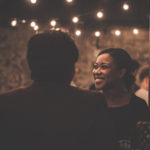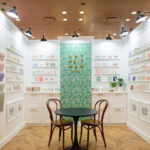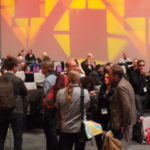In 1999, Mark Heflin waited patiently to see if he was going to get into the first national Illustration Conference (ICON). Held for the sole purpose of addressing a pressing issue within the illustration industry — ensuring illustrators got better deals when licensing their work for resale — the program had a 500-attendee cap, leaving many creative professionals on a wait list, including Heflin, director of New York City–based American Illustration and American Photography.
Heflin did get the call, and when he entered the simple, low-ceilinged ball-room of the Eldorado Hotel in Santa Fe, New Mexico, he found a podium surrounded by vinyl banners. “That was what you expected,” Heflin said of the no-frills setup. “This was a business conference. It was not supposed to be entertaining at all, or inspirational. It was very nuts-and-bolts.”
But as the illustration industry evolved, so did the now-biennial conference, and ICON’s board of directors decided to broaden its scope. “The conference now has specific prongs that it must provide in terms of content,” said Heflin, who has served as the first and only executive director of ICON since 2009. New areas of focus include inspiration, studio practice, and education.
“So the content can be more entertaining,” Heflin said, “and that lends itself to a stage.”
The conference moved from anonymous ballrooms to proscenium theaters in 2012. “The set became more important,” said Heflin, a former musical-theater performer who appeared on Broadway. “We finally realized that we were producing this event and bring-ing all of these people in to sit and look at a stage for four days, and we didn’t really deal with the stage. We’d throw a podium up and be done with it.”
For ICON8, held at the Portland Art Museum in Portland, Oregon, in 2014, organizers increased the attendance capacity to 700 to accommodate grow-ing interest. The board of directors appointed a dedicated stagecraft chair, illustrator Jason Holley, who was tasked with creating the set designs. A faculty member at the Art Center College of Design in Pasadena, Holley worked with a team of students for about nine months to conceptualize, design, and build two-dimensional set decorations for the stage.
Each year, Holley’s designs reflect the culture and atmosphere of ICON’s location and theme. In Portland, the theme was “Work and Play,” and sets incorporated Pacific Northwest elements like steamboats on swelling ocean waves, colorful wild flowers, rows of pine trees, mountain ranges, and giant red and black mushrooms. At ICON9 in Austin this past July, the theme was “Tall Tales,” so Holley and his students drew on Texas and Austin mythology as inspiration. And while the program was held in a ballroom at the Hilton Austin Hotel instead of a theater space, they still managed to transform the speaking area into something creative and interactive.
 Holley’s team changed out the sets during breaks throughout the programming, sometimes up to four times per day over the course of the four-day conference. One particularly impressive design involved large bats, arranged like they were flying out from behind the speaker, to represent the Congress Avenue Bridge in downtown Austin. Home to the largest urban bat colony in North America, the bridge attracts throngs of people daily who come to watch hundreds of bats take flight at dusk. Another set featured the mythical jackalope — a jack rabbit with antelope horns — that Holley said was from the “postcard racks of every gas station we stopped at when we would drive through Texas in the 1970s,” and a giant can of beans that was “equal parts Jack and the Beanstalk, ‘Blazing Saddles,’ and [sculptor] Claes Oldenburg.”
Holley’s team changed out the sets during breaks throughout the programming, sometimes up to four times per day over the course of the four-day conference. One particularly impressive design involved large bats, arranged like they were flying out from behind the speaker, to represent the Congress Avenue Bridge in downtown Austin. Home to the largest urban bat colony in North America, the bridge attracts throngs of people daily who come to watch hundreds of bats take flight at dusk. Another set featured the mythical jackalope — a jack rabbit with antelope horns — that Holley said was from the “postcard racks of every gas station we stopped at when we would drive through Texas in the 1970s,” and a giant can of beans that was “equal parts Jack and the Beanstalk, ‘Blazing Saddles,’ and [sculptor] Claes Oldenburg.”
 For the art directors, illustrators, and visual professionals in the audience, ICON’s intricate production design doesn’t go unnoticed. “They really appreciate the set,” Heflin said. “They are two-dimensional art that then have to become a set, which is a three-dimensional thing, so the audience appreciated that. There was a real kind of hands-on aspect to it.”
For the art directors, illustrators, and visual professionals in the audience, ICON’s intricate production design doesn’t go unnoticed. “They really appreciate the set,” Heflin said. “They are two-dimensional art that then have to become a set, which is a three-dimensional thing, so the audience appreciated that. There was a real kind of hands-on aspect to it.”
Per ICON’s bylaws, Holley steps down as the stagecraft chair after serving for two conferences. The board is considering taking the set in a new direction for ICON10 in 2018. “There has been talk about maybe utilizing projection,” Heflin said. “What’s exciting is we have an actual committee position for it now, as opposed to how it had been, which is sort of an afterthought. Jason was so conventional in a way, so this next guy may go in a completely different direction.




